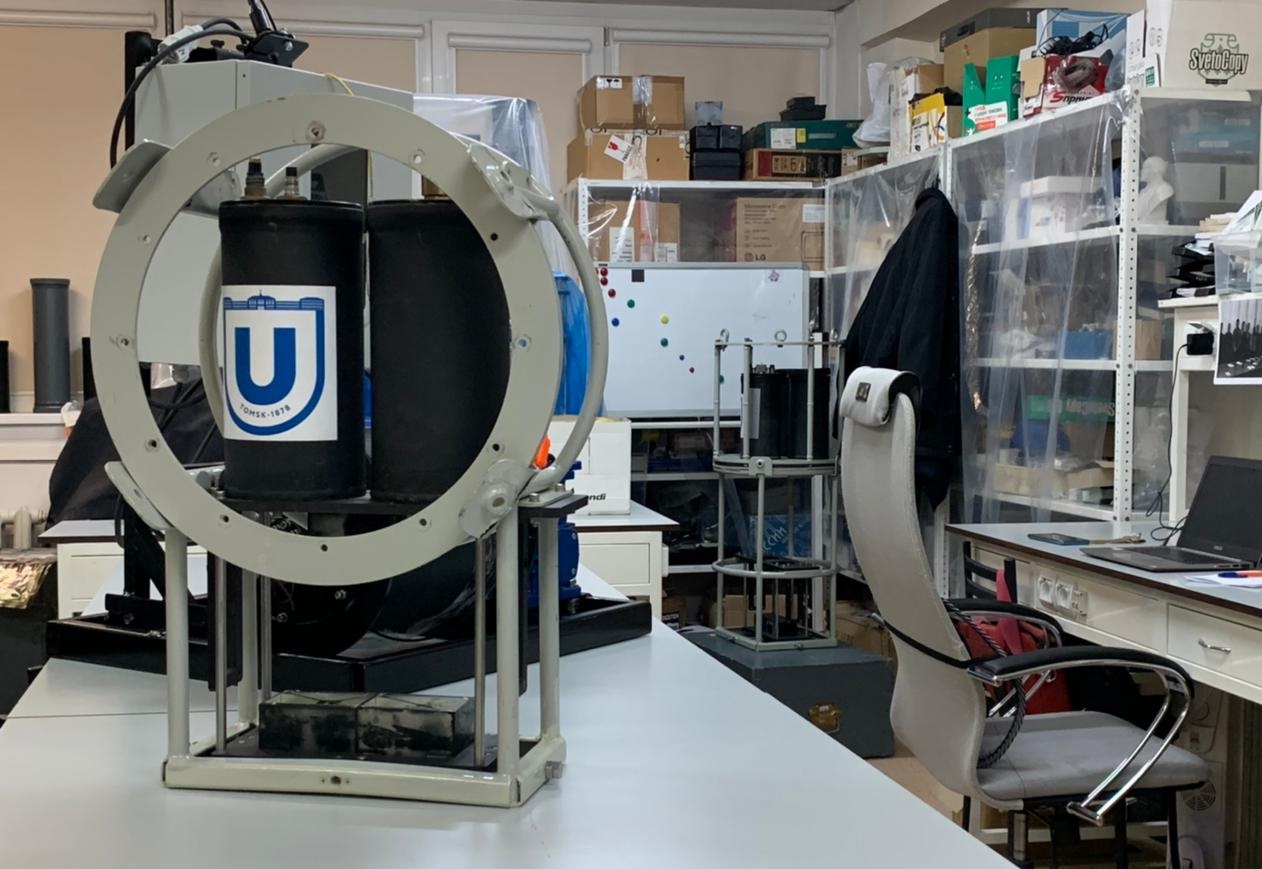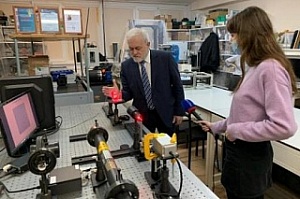Scientists from the Laboratory of Radiophysical and Optical Methods for Studying the Environment (TSU Faculty of Radiophysics) have found a way to determine the pollution of water bodies by studying plankton. The main tool is a digital holographic camera, which, placed in the water, can determine the size and shape of plankton and other particles, their speed, the number of individuals, and other parameters. Conclusions about the state of the reservoir and its biological diversity can be drawn from the data obtained.
- To record a hologram, you need to pass a laser beam through the volume of the medium and register it on a charge-coupled-device (CCD) camera. This will be the axial hologram of this volume of the medium, - explained Viktor Dyomin, TSU First Vice-Rector, head of the laboratory. - It differs from ordinary photography in that we can completely restore information about the wave that has passed through the volume, which means that we have all the information about the small particles or organisms that were in this environment.
How it works
A red-colored beam is directed from the laser source to the expander. The expander forms a uniform wide beam that passes through the particle volume. What is scattered is an object wave, which carries information about these particles. What passes by is the reference wave needed to create an interference pattern, which is recorded on the CCD camera as a hologram.

The method of optical holography makes it possible to study particles of various origins in different media - aerosols, cloud particles, inhomogeneities in optical crystals, glasses, erythrocytes, and others. Now TSU radiophysicists are engaged in holography of marine particles. It can be plankton, gas bubbles, oil droplets - any objects that are in the water. Plankton research answers several questions at once.
1. How does the ecosystem of the reservoir develop?
By what species of plankton are in the water and how they behave, one can understand how dynamic this ecosystem is and whether it is moving towards flourishing or is degrading. It is interesting both from the point of view of science and from the point of view of ecology.
2. What is the biodiversity of the reservoir?
Where plankton is, there are fish that feed on it. Therefore, according to the presence and types of plankton in the reservoir, it is possible to determine the varieties of other inhabitants and even predict what the catch of fishing vessels will be.
3. What is the ecological state of the reservoir?
Plankton feeds by pumping a large amount of water, therefore, changes in it occur even with little pollution of the water area. Therefore, by the behavioral reactions of plankton, by how it looks, how much of it and what it is, it is possible to assess the ecological state of the reservoir, moreover, in the early stages. This is very important in water areas, for example, nuclear power plants, gas pipelines, or oil platforms - facilities where environmental pollution can occur. Also, the holographic camera can detect single drops of oil or gas bubbles in the water.

When a digital holographic camera is immersed in water, the laser beam leaves one sealed box, reflected several times from the prisms, and then enters the second sealed box where the camera is located. This is the same axial layout, only folded to reduce the size of the equipment. Underwater, along with a digital holographic camera, additional sensors are usually installed, for example, temperature, pressure, and conductivity. The more information about the habitat is obtained, the more specific conclusions can be drawn and the more comprehensively the problem can be investigated.
Research focus
One of the research areas of the Laboratory's activities now is the study of the phototropic reaction of plankton. A digital holographic camera is placed in a water aquarium containing several species of plankton. Water with plankton is illuminated with attracting radiation of green color, plankton begins to react to it and gathers in a beam of attracting light. The green light is used to attract plankton because it is similar in color to light scattered by the microalgae that plankton feed on.
- By how quickly plankton begins to concentrate in the light beam, we can determine the degree of phototropic reaction. Further in the experiment, we add pollutants such as potassium dichromate or crude oil, and the plankton starts to react, and then the concentration rate decreases. It also depends on the dose of the pollutant. Thus, by studying the phototropic reaction of plankton, it is possible to diagnose pollution of natural water bodies at an early stage, - said Alexandra Davydova, a researcher at the Laboratory of Radiophysical and Optical Methods for Studying the Environment.
Why study plankton in the Arctic?
Tomsk radiophysicists have already moved from laboratory experiments to field studies. Three months ago, an international expedition onboard the Akademik Mstislav Keldysh vessel ended in the Kara, East Siberian, and Laptev seas. The expedition lasted 40 days, with scientists from the Institute of Oceanology of the Russian Academy of Sciences, the Pacific Oceanological Institute of the Far Eastern Center of the Russian Academy of Sciences, Tomsk State University, Stockholm University, and other scientific and educational organizations. The main mission of the expedition was the study of gas hydrates during the thawing of permafrost. But Tomsk scientists also had their interest - to use TSU the equipment and methods to study the features of plankton and other particles in the vicinity of seeps (zones of methane release on the shelf).

- In the region of the East Siberian Sea, we registered gas hydrate bubbles that come out from the bottom to the surface. They contain concentrated methane, which creates a greenhouse effect and affects global warming. Previously, this was done with a video camera and could not fix smaller bubbles. If they are not taken into account, the methane emission can be calculated with an error, - explained Aleksey Olshukov, deputy head of the laboratory. - Now one of the tasks is to track how methane emissions affect the behavior of plankton.
Usually, the study of plankton takes place outside its habitat. Biologists throw in a special net to the water depth and collect plankton in a layer, for example, from 100 to 150 meters. Thus, plankton is investigated not at a specific point, but in this 50-meter layer, and therefore, instead of specifics, a generalized result is obtained. But digital holographic camera can study plankton in the habitat and determine where the measurements are taken. The fiber communication line is capable of transmitting all these measurements to the ship in real-time. During the last expedition, a huge number of holograms were received; they will be studied and supplemented with data from the next expeditions. Scientists have painstaking work ahead, but they plan to get the results in a couple of years.

